File overview
Download all filesMultiple Choice Questions
Download all filesTest 1
This test covers the material in Chapters 1 to 17Microsoft Word
Test 2
This test covers the material in Chapters 18 to 27Microsoft Word
Test 3
This test covers the material in Chapters 28 to 44Microsoft Word
Test 4
This test covers the material in Chapters 26 to 31Microsoft Word
Test 5
This test covers the material in Chapters 45 to 67Microsoft Word
Answers to Multiple Choice Quizzes
Microsoft WordFamous People: Biographies
Here are the short biographies of the famous people mentioned in the book. We hope you find these interesting.
Robert Boyle
25 Jan 1627 – 31 Dec 1691
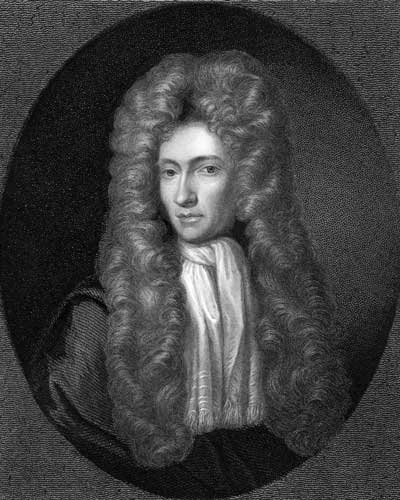
Robert Boyle, FRS, (25 January 1627 – 31 December 1691) was a natural philosopher, chemist, physicist, and inventor. Regarded today as the first modern chemist, he is best known for Boyle's law, which describes the inversely proportional relationship between the absolute pressure and volume of a gas, providing the temperature is kept constant within a closed system. The Sceptical Chymist is seen as a cornerstone book in the field of chemistry.
Boyle was born in Lismore Castle, in County Waterford, Ireland, the son of an Earl, and received private tutoring in Latin, Greek and French before being sent to Eton College in England. He later travelled, then went on to devote his life to scientific research, taking a prominent place in the group known as the ‘Invisible College’, who devoted themselves to the growth of the ‘new philosophy’.
In 1691 Robert Boyle died from paralysis.
Mentioned in Chapter 6
Anders Celsius
27 Nov 1701 – 25 Apr 1744

Anders Celsius (27 November 1701 – 25 April 1744) was a Swedish astronomer that went on to become professor of astronomy at Uppsala University, later going on to found the Uppsala Astronomical Observatory in 1741. In 1742 he proposed the Celsius temperature scale which takes his name.
The son of an astronomy professor, Celsius was a talented mathematician from an early age, and studied at Uppsala University, where his father was a teacher. In 1730 he became a professor of astronomy there.
Celsius was the first to suggest a connection between the aurora borealis and changes in the magnetic field of the Earth. At Nuremberg in 1733, he published a collection of 316 observations of the aurora borealis made by himself and others. In astronomy, Celsius began the first attempt to measure the magnitude of starlight with a tool other than the human eye.
He proposed the Celsius temperature scale in a paper to the Royal Society of Sciences in Uppsala, the oldest Swedish scientific society, founded in 1710. His thermometer was calibrated with a value of 100° for the freezing point of water and 0° for the boiling point. In 1744 he died from tuberculosis.
Mentioned in Chapter 28
Jacques Alexandre César Charles
Nov 12, 1746 – Apr 7, 1823
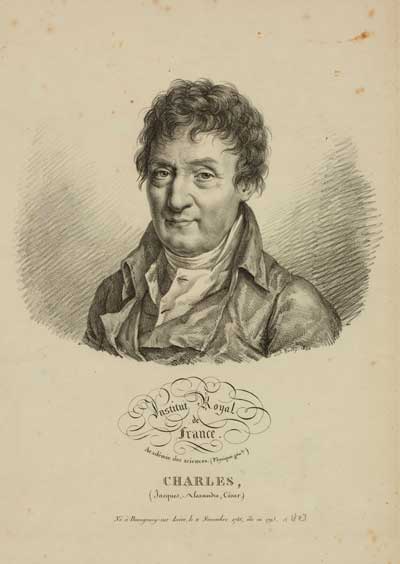
Jacques Alexandre César Charles (November 12, 1746 – April 7, 1823) was a French inventor, scientist, mathematician, and balloonist.
Jacques Charles and the Robert brothers launched the world's first hydrogen filled balloon on August 27, 1783, from the Champ de Mars, (now the site of the Eiffel Tower). It was filled with hydrogen that had been made by pouring a quarter of a tonne of sulphuric acid onto half a tonne of scrap iron. This gas was fed into the balloon via lead pipes.
On 1 December, 1783, Charles undertook a solo balloon flight. This time it ascended rapidly to an altitude of about 3,000 metres, where he saw the sun again. He began suffering from aching pain in his ears so he 'valved' to release gas, and descended to land gently about 3 km away at Tour du Lay. Charles never flew again, but a hydrogen balloon came to be called a Charlière in his honour.
Charles developed several useful inventions, including a valve to let hydrogen out of balloons and other devices, such as the hydrometer and reflecting goniometer, and improved the Gravesand heliostat and Fahrenheit's aerometer. In addition he confirmed Benjamin Franklin's electrical experiments.
Charles' law (also known as the law of volumes) describes how gases expand when heated.
It was first published by natural philosopher Joseph Louis Lussac in 1802, but he credited it to unpublished work by Jacques Charles, and named the law in his honour. Charles' Law states that under constant pressure, an ideal gas' volume is proportional to its absolute temperature. The volume of a gas at constant pressure increases linearly with the absolute temperature of the gas. The formula he created was V1/T1 = V2/T2
Mentioned in Chapters 5 and 28
René Descartes
31 March 1596 – 11 Feb 1650
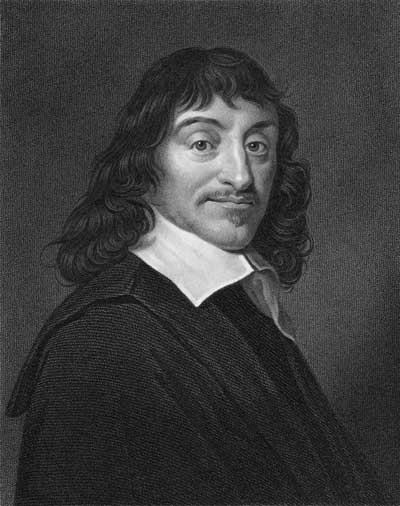
René Descartes (31 March 1596 – 11 February 1650) was a French philosopher, mathematician, and writer. He has been dubbed the 'Father of Modern Philosophy', and much subsequent Western philosophy is a result of his writings, which are studied closely to this day, in particular, his Meditations on First Philosophy. Descartes' influence in mathematics is also apparent; the Cartesian coordinate system — allowing algebraic equations to be expressed as geometric shapes in a two-dimensional coordinate system — was named after him.
Descartes is perhaps best known for the philosophical statement ‘Cogito ergo sum’ (I think, therefore I am), found in part IV of Discourse on the Method.
One of Descartes' most enduring legacies was his development of Cartesian or analytic geometry, which uses algebra to describe geometry. He ‘invented the convention of representing unknowns in equations by x, y, and z, and knowns by a, b, and c’. He also ‘pioneered the standard notation’ that uses superscripts to show the powers or exponents, for example the 4 used in x4 to indicate squaring of squaring. He was also the first person to assign a place for algebra in our system of knowledge, and believed that algebra was a method to automate or mechanize reasoning, particularly about abstract, unknown quantities. René Descartes died on 11 February 1650 in Stockholm, Sweden, of suspected pneumonia.
Mentioned in Chapter 63
Michael Faraday
22 Sept 1791 – 25 Aug 1867

Michael Faraday, FRS (22 September 1791 – 25 August 1867) was an English scientist whose main discoveries include electromagnetic induction, diamagnetism and electrolysis.
Faraday discovered two new compounds of chlorine and carbon, and also conducted the first rough experiments on the diffusion of gases. He invented an early form of what was to become the Bunsen burner, discovered chemical substances such as benzene and established that gases are the vapours of liquids possessing a very low boiling point. Faraday is also known for discovering the laws of electrolysis, and for terminology such as anode, cathode, electrode, and ion.
He established the basis for the concept of the electromagnetic field in physics, and also established that magnetism could affect rays of light and that there was an underlying relationship between the two phenomena. He discovered the principle of electromagnetic induction, diamagnetism, and the laws of electrolysis. His inventions of electromagnetic devices formed the foundation of electric motor technology, and it was largely due to his efforts that electricity became used in technology.
The SI unit of capacitance, the farad, is named in his honour.
Mentioned in Chapter 8
Joseph Henry
17 Dec 1797 – 13 May 1878
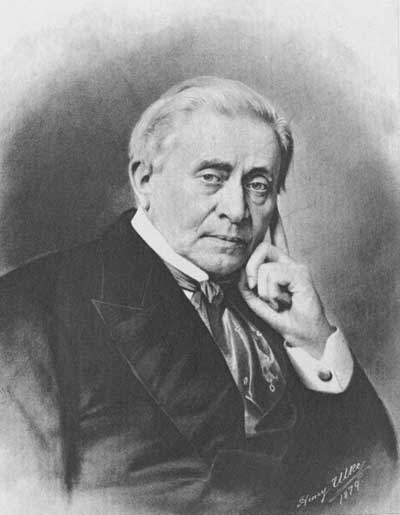
Joseph Henry (17 December 1797 – 13 May 1878) was an American scientist who discovered the electromagnetic phenomenon of self-inductance. He also discovered mutual inductance independently of Michael Faraday, although Faraday was the first to publish his results. The SI unit of inductance, the henry, is named in his honour.
Mentioned in Chapter 63
Heinrich Rudolf Hertz
22 Feb 1857 – 1 Jan 1894

Heinrich Rudolf Hertz (22 February 1857 – 1 January 1894) was the first person to conclusively prove the existence of electromagnetic waves. The scientific unit of frequency was named the hertz in his honour.
In some of his more advanced experiments, Hertz measured the velocity of electromagnetic radiation and found it to be the same as the light’s velocity. He also established beyond any doubt that light is a form of electromagnetic radiation.
His experiments expanded the field of electromagnetic transmission, and he also found that radio waves could be transmitted through different types of materials but were reflected by others, leading in the distant future to radar.
His discoveries would later be more fully understood by others and be part of the new ‘wireless age’.
Mentioned in Chapter 8
Robert Hooke
28 July 1635 – 3 March 1703
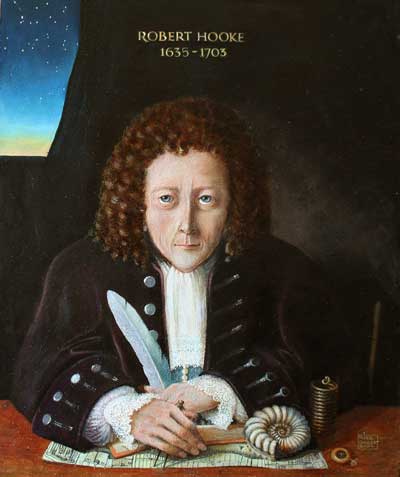
Robert Hooke FRS (28 July 1635 – 3 March 1703) was an English natural philosopher, architect and polymath.
Robert Hooke was born in 1635 in Freshwater on the Isle of Wight. On his father's death in 1648, Robert was left forty pounds, a sum that enabled him to buy an apprenticeship. Hooke studied at Wadham College during the Protectorate where he became one of a tightly knit group of ardent Royalists centred around John Wilkins. Here he was employed as an assistant to Thomas Willis and to Robert Boyle, for whom he built the vacuum pumps used in Boyle's gas law experiments. He built some of the earliest Gregorian telescopes, observed the rotations of Mars and Jupiter and, based on his observations of fossils, was an early advocate of biological evolution. He investigated the phenomenon of refraction, deducing the wave theory of light, and was the first to suggest that matter expands when heated and that air is made of small particles separated by relatively large distances. He performed pioneering work in the field of surveying and map-making and was involved in the work that led to the first modern plan-form map.
In 1660, Hooke discovered the law of elasticity which bears his name and which describes the linear variation of tension with extension in an elastic spring.
In 1665 Hooke published Micrographia, a book describing microscopic and telescopic observations, and some original work in biology. During this period Hooke coined the term cell for describing biological organisms. Micrographia also contains Hooke's ideas on combustion. His experiments led him to conclude that combustion involves a substance that is mixed with air, a statement with which modern scientists would agree, but that was not widely understood at the time. Hooke went on to conclude that respiration also involves a specific component of the air.
Mentioned in Chapters 5 and 28
Gustav Robert Kirchhoff
12 Mar 1824 – 17 Oct 1887
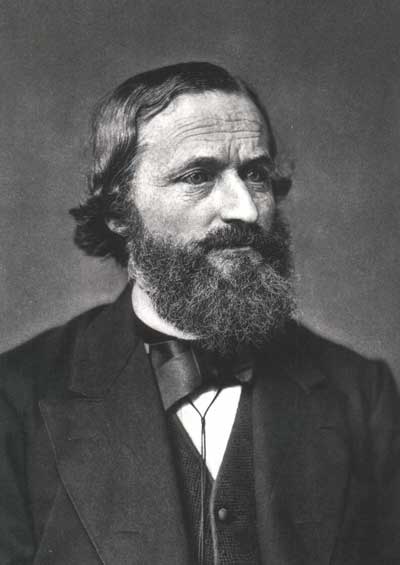
Gustav Robert Kirchhoff (12 March 1824 – 17 October 1887) was a German physicist who contributed to the understanding of spectroscopy, electrical circuits and the emission of black-body radiation by heated objects.
Two sets of independent concepts in both circuit theory and thermal emission are named ‘Kirchhoff's laws’ after him, as well as a law of thermochemistry.
Kirchhoff formulated his circuit laws, which are still used today, while still a student. In 1857 he calculated that an electric signal in a resistanceless wire travels at the speed of light. He proposed his law of thermal radiation in 1859, then gave a proof in 1861. Together with Robert Bunsen, Kirchhoff discovered caesium and rubidium in 1861.
He also contributed greatly to the field of spectroscopy by formalizing three laws that describe the spectral composition of light emitted by incandescent objects. He also contributed to optics, carefully solving Maxwell's equations to provide a solid foundation for Huygen's principle (and correcting it in the process). Kirchhoff died in 1887.
Mentioned in Chapter 13
Gottfried Wilhelm Leibniz
July 1, 1646 – Nov 14, 1716
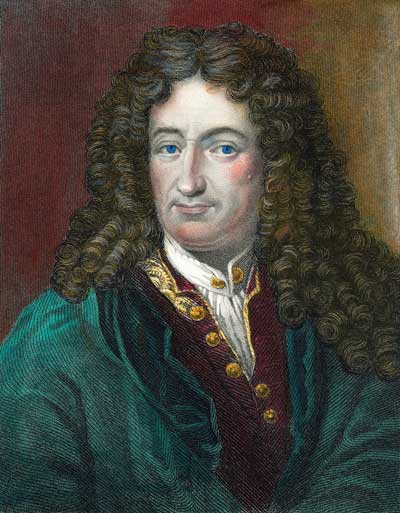
Gottfried Wilhelm Leibniz(sometimes von Leibniz) (July 1, 1646 – November 14, 1716) was a German mathematician and philosopher.
Leibniz developed infinitesimal calculus independently of Isaac Newton, and his Law of Continuity and Transcendental Law of Homogeneity only found mathematical use in the 20th century. In 1685 he was the first to describe a pinwheel calculator, and also invented the Leibniz wheel, used in the arithmometer, the first mass-produced mechanical calculator. He also refined the binary number system, which is at the foundation of virtually all digital computers.
Leibniz was the first to see that the coefficients of a system of linear equations could be arranged into an array, now called a matrix, which can be manipulated to find the solution of the system.
Mentioned in Chapter 45
John Napier
1550 – 4 Apr 1617
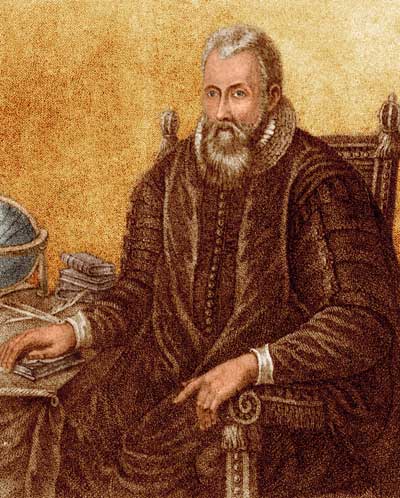
John Napier of Merchiston (1550 – 4 April 1617) is best known as the discoverer of logarithms. The inventor of the so-called ‘Napier's bones’, Napier also made common the use of the decimal point in arithmetic and mathematics.
The computational advance available via logarithms made calculations by hand much quicker. The way was opened to later scientific advances, in astronomy, dynamics, physics; and also in astrology. Napier also improved Simon Stevin's decimal notation and Arab lattice multiplication, used by Fibonacci, was made more convenient by the introduction of Napier's bones, a multiplication tool he invented using a set of numbered rods.
Mentioned in Chapter 14
Sir Isaac Newton
25 Dec 1642 – 20 March 1727
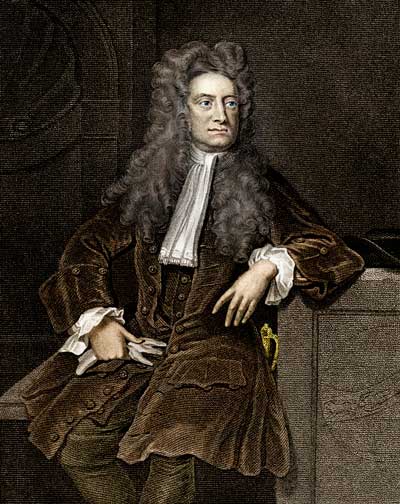
Sir Isaac Newton PRS MP (25 December 1642 – 20 March 1727) was an English polymath. Philosophiæ Naturalis Principia Mathematica, published in 1687, lays the foundations for much of classical mechanics used today. Newton showed that the motions of objects are governed by the same set of natural laws, by demonstrating the consistency between Kepler's laws of planetary motion and his theory of gravitation.
Newton developed a theory of colour based on the observation that a prism decomposes white light into the many colours that form the visible spectrum. He also formulated an empirical law of cooling and studied the speed of sound. In mathematics, Newton shares the credit with Leibniz for the development of differential and integral calculus.
p>Newton was appointed Lucasian Professor of Mathematics in 1669. From 1670 to 1672, Newton lectured on optics. During this period he investigated the refraction of light, demonstrating that a prism could decompose white light into a spectrum of colours, and that a lens and a second prism could recompose the multicoloured spectrum into white light. He also showed that the coloured light does not change its properties by separating out a coloured beam and shining it on various objects. Newton noted that regardless of whether it was reflected or scattered or transmitted, it stayed the same colour. Thus, he observed that colour is the result of objects interacting with already-coloured light rather than objects generating the colour themselves. This is known as Newton's theory of colour.From this work, he concluded that the lens of any refracting telescope would suffer from the dispersion of light into colours (chromatic aberration). As a proof of the concept, he constructed the first known functional reflecting telescope, today known as a Newtonian telescope, which involved solving the problem of a suitable mirror material and shaping technique.
The Principia was published on 5 July 1687. In this work, Newton stated the three universal laws of motion that enabled many of the advances of the Industrial Revolution. Newton's three laws of motion (stated in modernised form): Newton's First Law (also known as the Law of Inertia) states that an object at rest tends to stay at rest and that an object in uniform motion tends to stay in uniform motion unless acted upon by a net external force. Newton's Second Law states that an applied force on an object equals the rate of change of its momentum with time. The SI unit of force is the newton, named in Newton's honour.
Newton's Third Law states that for every action there is an equal and opposite reaction. This means that any force exerted onto an object has a counterpart force that is exerted in the opposite direction back onto the first object. He died in his sleep in London on 20 March 1727 and was buried in Westminster Abbey.
Mentioned in Chapter 17
Georg Simon Ohm
16 March 1789 – 6 July 1854
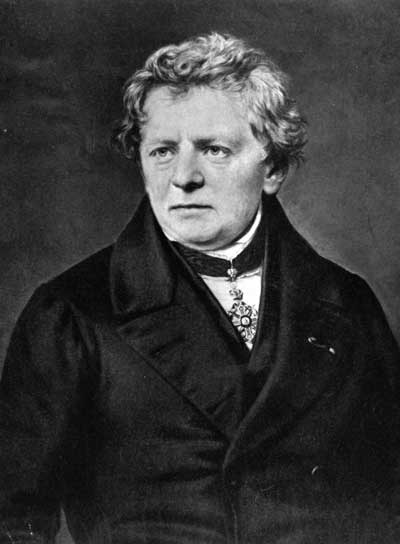
Bavarian physicist and mathematician. Ohm found that there is a direct proportionality between the potential difference (voltage) applied across a conductor and the resultant electric current. This relationship is known as Ohm's law. It first appeared alongside his complete theory of electricity, in which he stated his law for electromotive force. Ohm died in Munich in 1854, and is buried in the Alter Südfriedhof.
Mentioned in Chapter 5
Pythagoras of Samos
Born about 570 BC and died about 495 BC
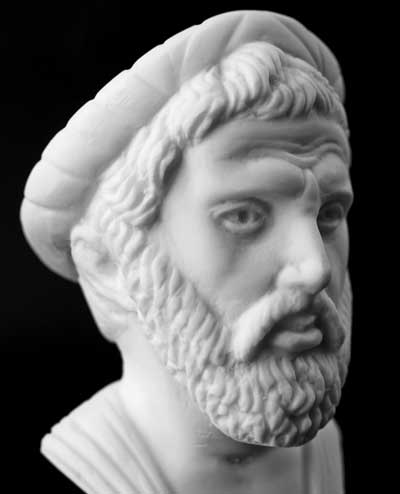
Pythagoras of Samos (Born about 570 BC and died about 495 BC) was an Ionian Greek philosopher and mathematician.
Pythagoras made influential contributions to philosophy in the late 6th century BC. He is best known for the Pythagorean theorem, which states that in a right-angled triangle the area of the square on the hypotenuse (the side opposite the right angle) is equal to the sum of the areas of the squares of the other two sides - that is, a2 + b2 = c2
Mentioned in Chapter 22
Thomas Simpson
20 Aug 1710 – 14 May 1761
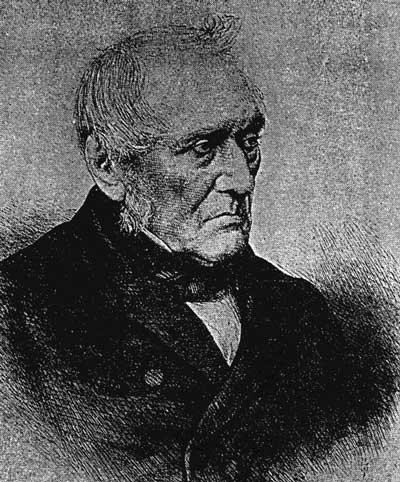
Thomas Simpson FRS (20 August 1710 – 14 May 1761) was the British mathematician who invented Simpson's rule to approximate definite integrals.
Simpson, born in Market Bosworth, Leicestershire, taught himself mathematics, then turned to astrology after seeing a solar eclipse. He also dabbled in divination and caused fits in a girl after 'raising a devil' from her. After this incident, he and his wife had to flee to Derby. They later moved to London, where he taught mathematics at the Royal Military Academy, Woolwich.
Mentioned in Chapters 21 and 57
Thomas Young
13 Jun 1773 – 10 May 1829

Thomas Young (13 June 1773 – 10 May 1829) was an English polymath. He is famous for having partly deciphered Egyptian hieroglyphics (specifically the Rosetta Stone). Young made notable scientific contributions to the fields of vision, light, solid mechanics, energy, physiology, language, musical harmony and Egyptology.
At the age of fourteen Young had learned Greek and Latin and was acquainted with French, Italian, Hebrew, German, Chaldean, Syriac, Samaritan, Arabic, Persian, Turkish and Amharic.
Young's modulus relates the stress (pressure) in a body to its associated strain (change in length as a ratio of the original length). For the first time it allowed prediction of the strain in a component subject to a known stress (and vice versa). Young's modulus depends only on the material, not its geometry, thus allowing a revolution in engineering strategies.
Young has also been called the founder of physiological optics. In 1793 he explained the mode in which the eye accommodates itself to vision at different distances as depending on changes of the curvature of the crystalline lens, being the first to describe astigmatism, and hypothesised that colour perception depends on the presence in the retina of three kinds of nerve fibres.